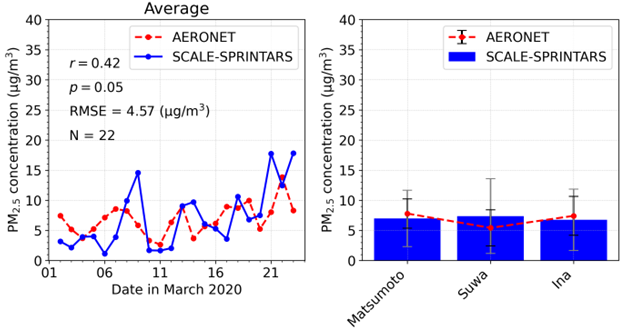Progress Report
Development of an Atmospheric Simulation Model for Estimating the Probability of Local Atmospheric Phenomena[1 - 3] Development of an Atmospheric Simulation Model and Evaluation Methods to Improve the Accuracy of Probability Estimation
Progress until FY2024
1. Outline of the project
"Estimating the likelihood in predicting when, where, and how much rainfall will occur"
In weather control, selecting the optimal control method requires highly accurate estimation of the probability (likelihood) of the location, time, precipitation amount, and wind speed of phenomena that may occur under specific regional and meteorological conditions—whether these are deterministically defined or occur by chance.
In probability estimation, imperfections in weather simulation models can hinder accurate predictions. Solving this issue demands not incremental improvements to existing computational methods, but rather the development of qualitatively different approaches. This project focuses on developing novel computational schemes for several components that significantly affect the accuracy of probability estimation.
Developing a new model requires verification of its validity and usefulness. Therefore, in parallel with the model development, we also work on developing verification methods that objectively indicate the model’s improved accuracy in probability estimation. This ensures the reliability of the new model and clearly demonstrates its practical utility.
2. Outcome so far
We implemented and validated four novel computational schemes:
- A new surface-layer turbulence scheme that removes the assumption of spatio-temporal homogeneity and accounts for turbulence on the order of 1 meter.
- A fluid dynamics scheme based on the Discontinuous Galerkin method that achieves both high computational efficiency and accuracy.
- A Lagrangian particle-based “super-droplet” microphysics scheme that calculates cloud behavior through the motion of water droplets and ice particles.
- A scheme that explicitly simulates the spatiotemporal variation of aerosols, clouds, and lightning, and their interactions.
Additionally, we developed evaluation and factor analysis methods to objectively assess the accuracy of probability estimation via simulation. Using historical heavy rainfall cases, we demonstrated that simulations employing the super-droplet method yield statistically significant improvements in accuracy.
3. Future plans
We will continue refining the computational schemes developed in this research and expand development to schemes not yet addressed. Our long-term goal is to develop a model with the precision and reliability required for practical weather control around 2050.

